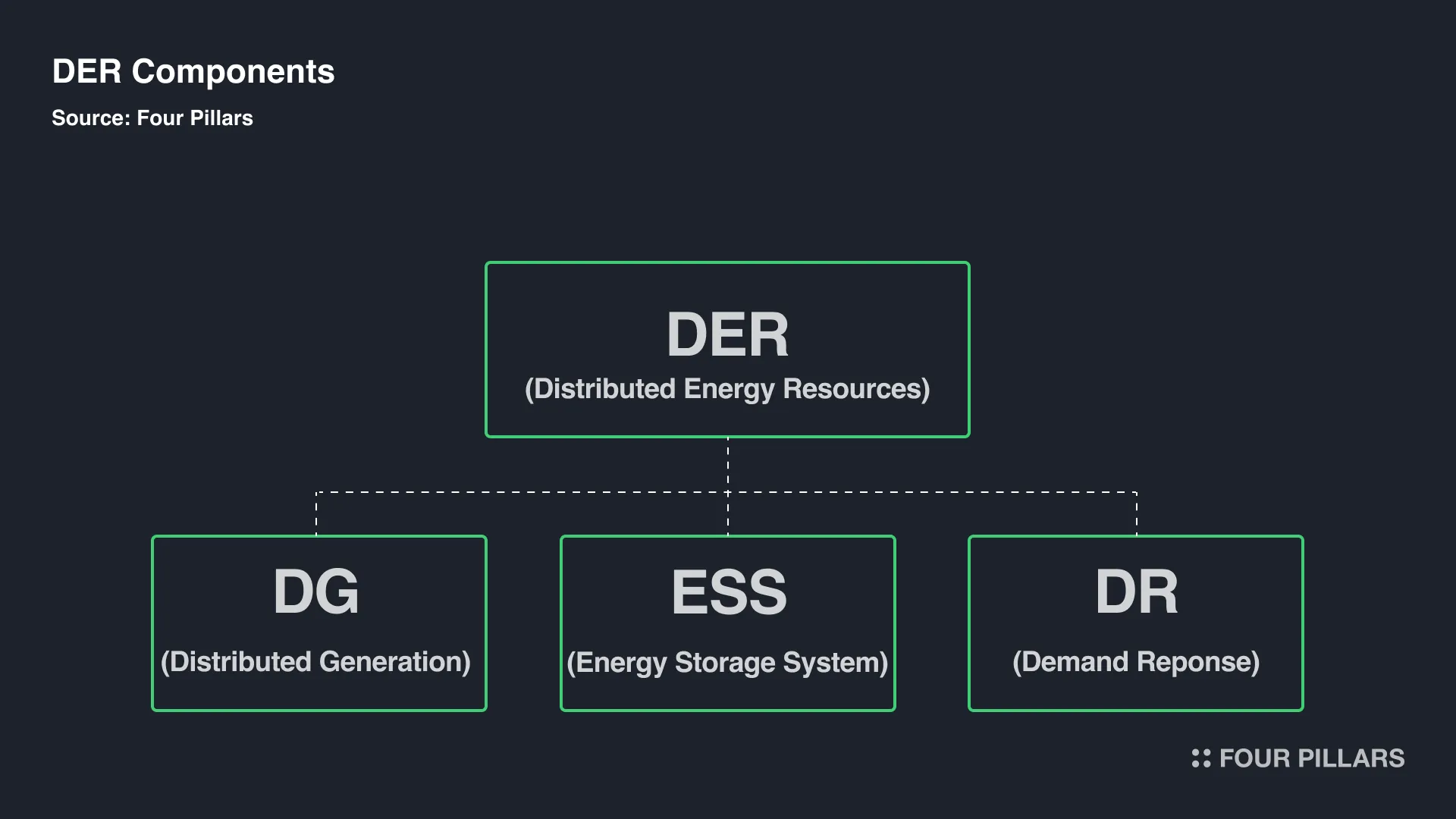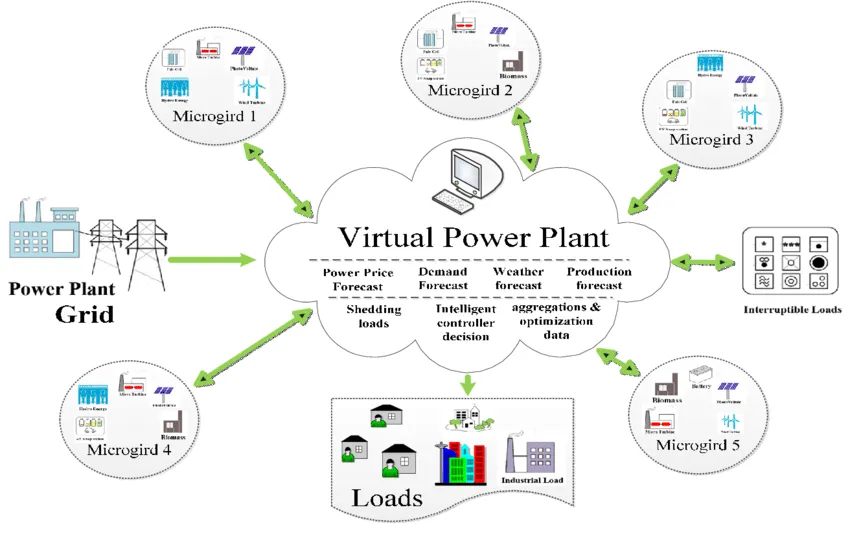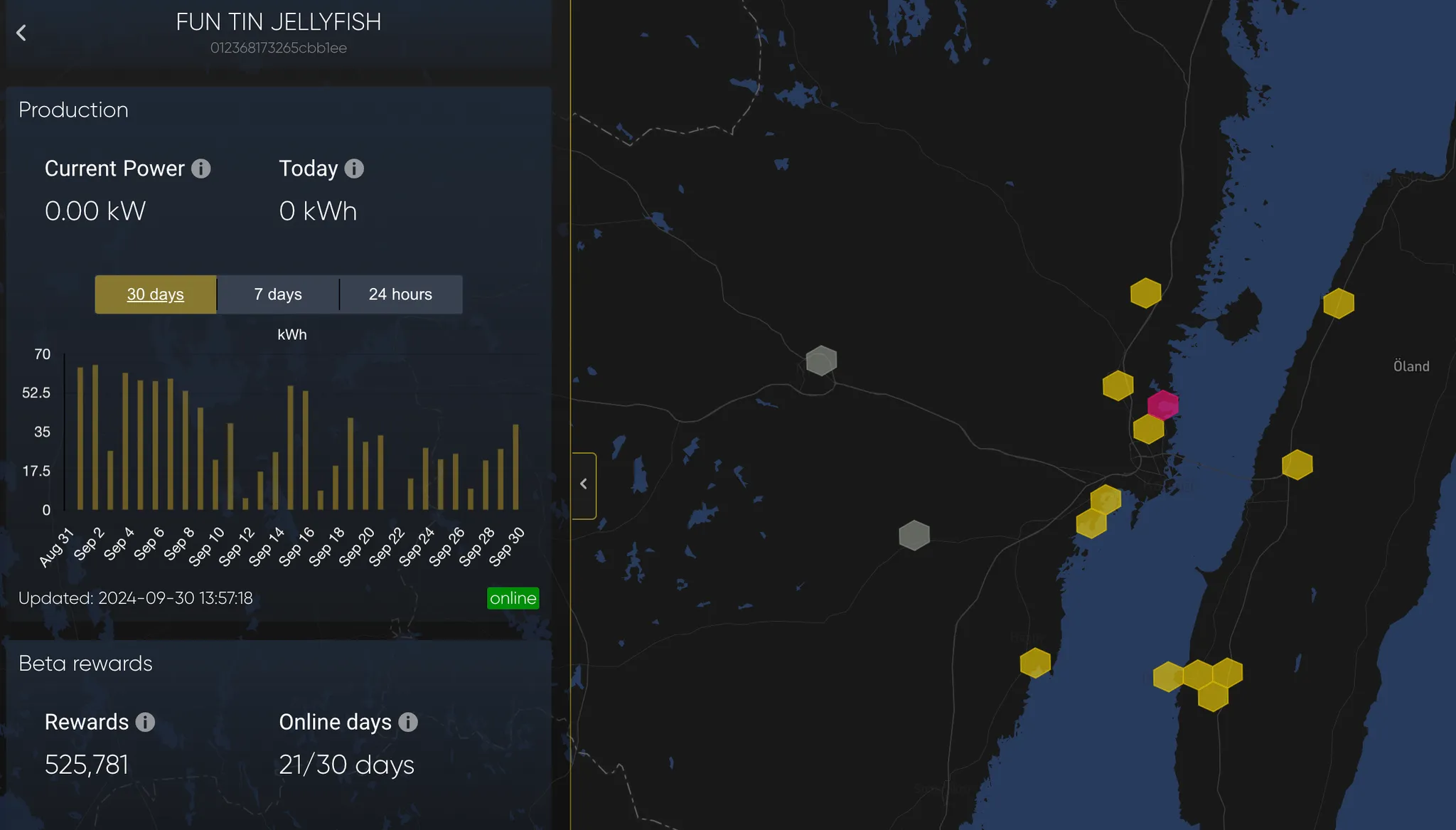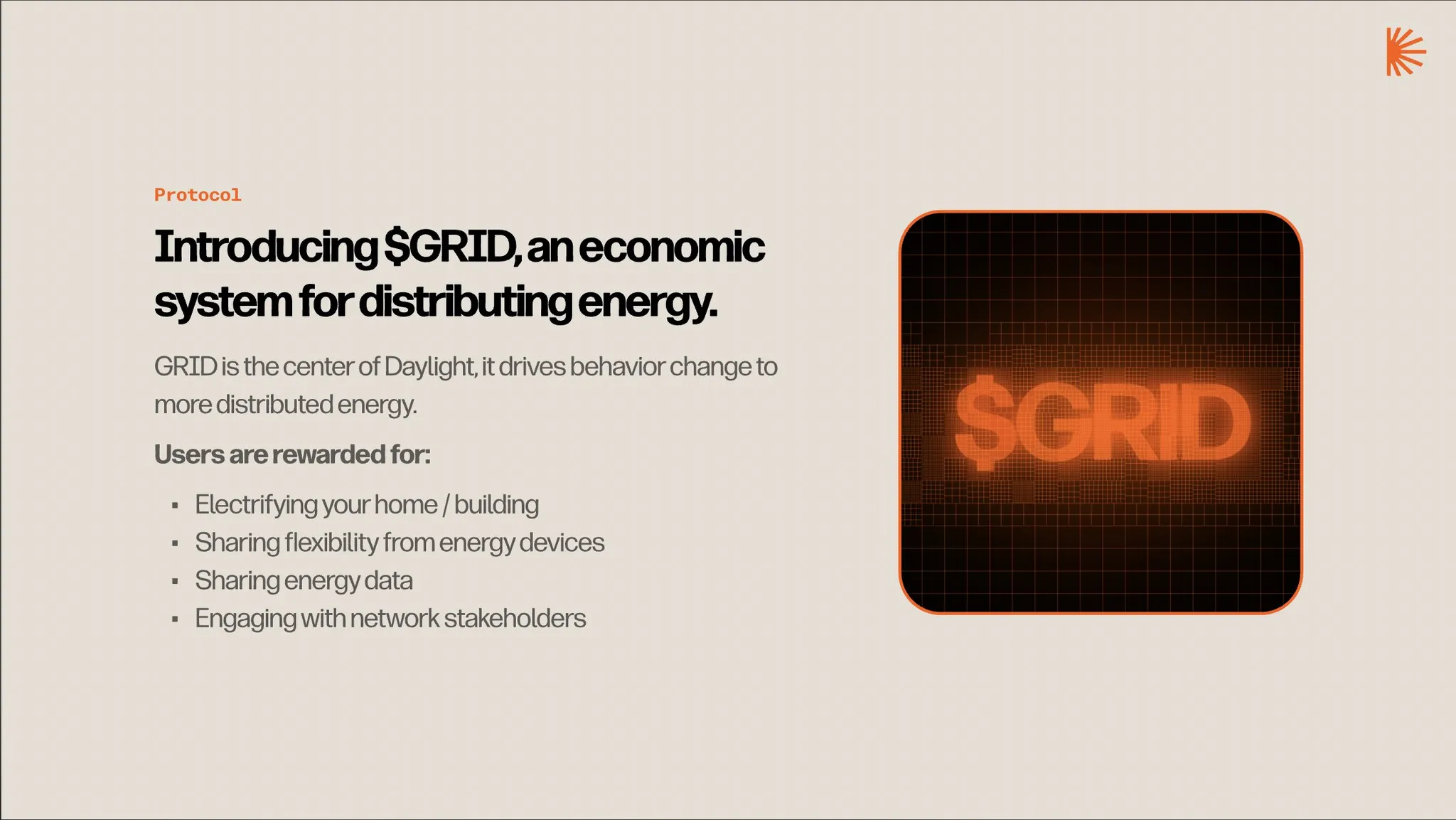Is Crypto good for Earth? Most people would answer "no" or "irrelevant" when asked if crypto is beneficial for the Earth. Even those who believe in crypto's potential to reshape centralized financial infrastructure through DeFi or enhance censorship resistance in social apps might struggle to see how it could positively impact our planet. In fact, it took considerable time for crypto to shed the narrative that Bitcoin's Proof of Work was causing massive carbon emissions and harming the environment. This history might suggest that crypto and environmental concerns are largely unrelated.
However, the emerging concept of Decentralized Energy Networks (DEN) presents a new paradigm where crypto could potentially improve the efficiency of renewable energy production, supply chains, and consumption, thereby benefiting the environment. While this idea is still in its early stages and could end up as just another buzzword or one of many proposed DePin projects, it holds significant potential. DEN offers a compelling narrative that could explain crypto's relevance to a broader audience and potentially set new standards in the untapped virtual power plant market within the renewable energy industry.
Let's explore the problems DEN aims to solve, related concepts, and solutions proposed by various projects. Through this examination, we can consider whether this could truly become a use case for crypto that positively impacts our planet.
1.1.1 Current State of Renewable Energy
The transition from fossil fuel and nuclear-based energy production to environmentally friendly renewable energy seems to be a universal goal, almost like a predetermined future. Already, over 30% of global electricity is produced through renewable sources, indicating the increasing prevalence of renewable energy production. Consequently, the adoption of renewable energy production systems is expanding. For instance, residential solar panels have seen significant uptake, with 37% of households in Australia and 15% in California having installed panels.
However, despite the growing demand for renewable energy, the systems for distributing and managing the generated power still largely align with centralized, fossil fuel-based energy systems. This is because historically, it was cheaper and easier to control large-scale power production through economies of scale at a few centralized facilities. As a result, today's power systems are built to supply electricity unidirectionally from a small number of large-scale generation facilities to numerous customers.
Consequently, as renewable energy production and demand have increased rapidly in recent years, the power grid's balance has become unstable, leading to more frequent large-scale power outages. Moreover, the exponential growth in energy demand due to AI advancements - with computational power requirements doubling every three months and increasing nearly tenfold every 18 months - is putting additional strain on global energy systems.
1.1.2 DER (Distributed Energy Resource): A System for Renewable Energy Production and Management
In this context, DERs and virtual power plants are gaining importance. DER (Distributed Energy Resource) refers to systems that produce and consume renewable energy in distributed demand areas, as opposed to centralized generation facilities based on fossil fuels or nuclear power. DERs encompass various technologies that can be categorized into distributed generation, energy storage, and demand response throughout the process of renewable energy production, grid supply, and delivery to end-users.

First, power is generated through distributed generation (DG), which refers to small-scale power generation facilities using renewable energy sources such as solar panels, wind turbines, and fuel cells. The electricity produced is then stored in Energy Storage Systems (ESS), which convert it into physical or chemical energy. This stored energy can be used to supply power to the grid continuously or to reduce grid load during peak demand periods. Finally, when end-users consume electricity, demand response (DR) processes come into play, adjusting electricity usage patterns by considering time-of-use pricing to reduce power supply during peak hours or increase it as needed.
DERs function as alternative power systems, inherently operating in distributed areas for energy production and management. This approach is well-suited to renewable energy sources like sunlight and wind, which are naturally dispersed and don't require centralized production facilities. DERs offer several advantages over traditional systems. For instance, the conventional method of unidirectional power transmission from a single production site to all consumption points results in relatively low energy efficiency, with about 60% loss during transmission due to long distances. In contrast, DERs produce and consume renewable energy near distributed demand areas, significantly reducing transmission-related energy losses. Furthermore, as DERs utilize renewable energy sources like solar and wind power, they align with global goals of carbon reduction and energy efficiency improvement, accelerating their adoption.
1.1.3 Virtual Power Plant: A System for 'Integrating' DERs

Source: Virtual Power Plant and Microgrids controller -
As DERs have been deployed to produce, store, and manage renewable energy, the need for virtual power plants to integrate these distributed DERs has grown. Virtual power plants enable real-time exchange of power supply and demand information, predict generation capacity, and adjust consumption to ensure efficient use of renewable energy. A virtual power plant is essentially a software-based power plant that integrates distributed DERs into a single operating system, allowing for prediction of generation capacity, monitoring of power demand, and improvement of DER operational efficiency.
For example, renewable energy sources often have unstable electricity production due to variable sunlight or wind conditions, leading to high volatility in electricity prices and a relatively high risk of power outages. In such scenarios, a virtual power plant functions as an integrated system that predicts the generation capacity and power demand of each distributed DER, strategically producing, storing, distributing, and trading energy accordingly. This approach helps stabilize power supply and demand and prevent outages.
The clear need for virtual power plants, coupled with the increased demand for DERs, has led to various companies attempting to establish new businesses and pioneer this yet-to-be-claimed industry sector. Elon Musk's Tesla, for instance, has been investing $800 million since 2021 to build the world's largest virtual power plant in Australia. They plan to install 250MW solar power generators in over 50,000 homes in South Australia to produce and sell electricity. This initiative is expected to reduce net electricity expenditure for households by more than 25%, from 40 cents per kWh to 27 cents, through revenue generated from solar ESS electricity sales.
Despite their clear necessity, virtual power plants face several challenges in their initial implementation stages. One issue is that today's power grid systems have evolved into highly regulated sectors, resulting in a strong monopolistic business structure. This creates high entry barriers for new players and necessitates a top-down approach to meet regulatory requirements when developing virtual power plants. Another problem is the lack of a communication layer needed to integrate DERs. As DERs are globally distributed and there's no clear incentive to provide energy data, virtual power plants struggle to gather sufficient distributed energy data.
Crypto and blockchain are gaining attention as solutions to overcome the limitations of virtual power plants, under the term "decentralized energy networks." While attempts to combine energy solutions with blockchain have been ongoing, as evidenced by projects like Powerledger, which has been providing P2P energy market services since 2016, the concept has recently been thrust into the spotlight with news of a16z investing $9 million in Daylight, a decentralized energy protocol.
Now, not just Daylight, but projects like Srcful, Starpower, and Powerledger are actively attempting to build decentralized virtual power plants or address related issues. The integration of blockchain and crypto with virtual power plants primarily focuses on effectively collecting energy data from distributed DERs through token incentives. Currently, DER operators lack strong incentives to actively provide energy data, and there's no suitable platform for data exchange. Token incentives could offer a meaningful solution for virtual power plants to gather sufficient energy data. Let's examine some specific projects below.
1.2.1 Srcful Energy

Source: Srcful
Srcful is a sub-network developing energy solutions within the Helium ecosystem. It aims to build the world's largest virtual power plant connecting DERs such as solar power plants and battery storage facilities. As part of this goal, Srcful interoperates with Helium's hotspot hardware devices, allowing users to connect solar panels or batteries to these hotspots for rewards. The Srcful network transmits energy data collected through these devices, including energy production, consumption, and grid frequency, to the Srcful energy network. Through this approach, Srcful seeks to build an efficient and sustainable distributed virtual power plant by bootstrapping the collection of distributed energy data through token incentives.
1.2.2 Starpower

Source: Starpower docs
Starpower focuses on addressing the absence of a global communication layer connecting DERs, local virtual power plant operators, and end-users of energy. In other words, while DERs are distributed worldwide, the lack of communication standards makes it difficult for virtual power plant operators to integrate long-tail DER data into a unified network. Rather than positioning itself as a standalone virtual power plant, Starpower aims to serve as an information flow hub between DERs and virtual power plant operators in various electricity demand areas, using the Solana network as its foundation. By building a communication layer for energy devices, similar to the internet's TCP/IP, Starpower plans to collect DER data globally, analyze it, and provide insights to virtual power plant operators. In its initial phase, Starpower has launched Starplug, a plugin that allows users to connect household appliances to the Starpower network. This enables users to monitor and control their devices' energy consumption in real-time, laying the groundwork for future plans to support virtual power plants by collecting energy data.
1.2.3 Daylight Energy

Source: X(@daylightenergy_)
Daylight plans to start by selling DER databases to existing energy companies, with the ultimate goal of building a virtual power plant where anyone can access and control information about DERs. For example, when devices in residential facilities such as solar panels, battery storage, and smart thermostats generate data, homeowners can collect this data through Daylight's protocol and sell it to existing energy companies. Daylight also plans to provide a decentralized marketplace where energy generated by DERs can be auctioned to virtual power plant operators. Through these features, Daylight aims to create an environment where users can share energy and data from DERs, participate in energy market interests, and virtual power plant operators can easily secure energy and collect data. This vision is set to begin with the launch of the $GRID protocol in early 2025.
The persuasiveness of decentralized energy networks lies in their approach to blockchain adoption. While most blockchain projects focus on decentralizing existing centralized operations, decentralized energy networks utilize blockchain to integrate already distributed resources under a single standard.
Social applications, for example, often set important missions based on blockchain utilization, such as increasing censorship resistance through decentralized operations or promoting scalability through permissionless market creation or content generation. While this is certainly one of the value propositions made possible by blockchain, it often results in blockchain being portrayed solely as a technology for explaining legitimacy, such as censorship resistance. If one aims to innovate an application that has been operating smoothly with centralized operations using blockchain, there's a need to present clearer advantages that can be gained through blockchain utilization, compared to the benefits of centralized operations like quick decision-making and efficiency.
In contrast, decentralized energy networks approach blockchain utilization not to decentralize centralized operations, but to achieve integration for more efficient management of already distributed resources. Renewable energy sources like sunlight shine across the entire Earth, and wind blows everywhere on the planet. In other words, renewable energy is inherently a distributed energy source. Therefore, while centralized power systems are efficient for fossil fuel or nuclear-based power production due to economies of scale, renewable energy is more suited to guerrilla-style production and management. Consequently, in the next stage after producing renewable energy, a system that gathers distributed resources under a single standard is inevitably needed for efficient utilization of renewable energy.
In this regard, blockchain can be a useful tool for collecting energy and data from DERs, based on economic incentives through tokens and a borderless financial system by default. Of course, it's true that quite a few DePin projects are already attempting to solve similar problems with computing resources or AI training data using a similar structure. However, considering the industrial background and infrastructure structure of existing power grid systems, as well as the characteristics of energy sources like solar and wind power, decentralized energy networks seem to explain the benefits of utilizing blockchain more clearly, from efficiency aspects to the ability to flexibly respond to regulations. This makes their potential worth anticipating.
The basic structure through which decentralized energy networks propose value is as follows: Virtual power plants are needed as a unified system for communication connections because DERs are globally distributed → Users lack incentives for virtual power plants to smoothly collect energy data from DERs, and the monopolistic industry structure exacerbates the cold-start problem for virtual power plants → Efficiency in energy operations is improved by building decentralized virtual power plants or acting as third-party intermediaries providing data to existing virtual power plants, using token incentives and blockchain communication protocols.
While this approach has its merits, most projects are still in the early stages of presenting ideas, raising doubts about whether they can actually achieve visions like "the world's largest virtual power plant." Especially in a situation where traditional companies like Tesla are entering the market, investing $800 million to build the world's largest virtual power plant in South Australia, it seems challenging for these projects to establish competitiveness. Therefore, to position themselves as major players in the virtual power plant industry in the future, they need to create unique moats with go-to-market strategies optimized for crypto infrastructure, beyond simple token incentives.
For example, utilizing RWA tokenization modules to connect the Renewable Energy Certificate (REC) market with crypto market and product features could be one way to leverage crypto infrastructure. This could provide stakeholders with a flexible trading environment and expand the market by including participants such as traders and DeFi protocols in the stakeholder ecosystem, in addition to DER operators, virtual power plant companies, and power consumers. As decentralized energy networks are
Dive into 'Narratives' that will be important in the next year